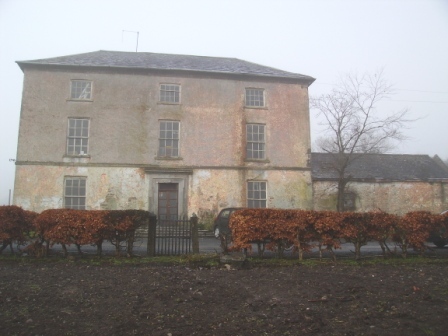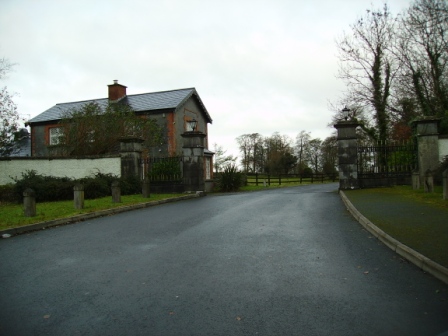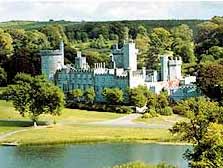Manus South House
Houses within 5km of this house
Displaying 15 houses.
Houses within 5km of Manus South House
Displaying 15 houses.
| House name | Description | |
|---|---|---|
| Claremount House | Claremount house and demesne were part of the Barntick estate. Occupied by Jonas Studdert in 1814 and by Wyndham F. Patterson at the time of Griffith's Valuation. His lease expired on 25 Mar 1857. It was then leased to the Lynch family. One descendant was Patrick Lynch, Senator of the Irish Free State and Attorney General of Ireland 1936-1940. | |
| Barntick | A 3 storey house dating back to the 17th century, it was originally a Hickman home. The Hickmans sold the property to the Peacockes in the mid 18th century. In 1786 Wilson refers to it as the seat of Mr. Peacocke. Occupied by Daniel Powel in 1814 the house was later owned by the Roche family of Limerick and leased to the Lyons, who eventually bought the property. Now owned by the Murphy family through marriage with a member of the Lyons family. |

|
| Buncraggy | A home of the Burton family in the 18th century though Wilson refers to it as the seat of Mr. Armstrong in 1786. It was held by James O'Gorman from the Marquess of Conyngham at the time of Griffith's Valuation. The house remained in the possession of the O'Gorman family until the end of the 19th century when it became the property of the Caher family. The house is still occupied and the yard buildings are the centre of a farming enterprise. |

|
| Islandmagrath House | Originally a Burton property bought from the Earl of Thomond, Islandmagrath was leased to Edward Maunsell by the Marquess of Conyngham at the time of Griffith's Valuation. It is described as "steward's house", with a £10 valuation. A house and farm buildings are still extant at the site. | |
| Carnelly | An 18th century three-storey Georgian house, probably designed by Francis Bindon (1690-1765), home of the Stamer family in the 18th century and for much of the 19th century. In 1786 Wilson refer to it as the seat of William Stamer. It passed through marriage to Francis N. Burton of Carrigaholt and then to the O'Grady family. Carnelly House was let from 1840-1849 to John O’Brien of the Ballynalacken family, Member of Parliament for Limerick. His fifth son ‘Peter the Packer’, the notorious crown prosecutor, was born there in 1842. Peter O’Brien was appointed Attorney General in 1888, received a knighthood in 1891 and was created Baron Kilfenora in 1900. After 1922 distinguished historian Mr Justice Gleeson came to live at Carnelly and the Gleeson family are still resident. It was offered for sale in 2013. |

|
| Manus House | Weir writes that John Hartigan of Manusmore was the Clare County Surveyor. He died in 1756. Manusmore was occupied by Thomas Lynch in 1814 and by Terence Healy at the time of Griffith's Valuation. Other occupiers in the latter half of the 19th century were George Walton and Hugh Tarpey. The McInerneys of Ennis bought the farm in the 1890s and have lived there for over a hundred years. | |
| Ballygirreen | At the time of Griffith's Valuation Ballygirreen was occupied by Francis O'Donohoe who held the property from Lord Inchiquin. The value of the buildings was £12 in the mid 1850s and in 1906. A house is still extant at the site. | |
| Shepperton | Castlekeale and Shepperton or Shepherdsfield houses were both located in the townland of Ballysallagh West. Weir writes that the Fitzgerald family moved from Castlekeale to Shepperton in the latter part of the 18th century. The house appears to have been leased out to many different people, such as John Wrixton in 1814, John Gabbutt in 1837 and Captain William J. Owen in the 1850s when the house was valued at £22. Weir writes that the house is now demolished. | |
| Carrigoran | An 18th century house the residence of the Fitzgerald family in the 18th and 19th centuries. Griffith's Valuation shows that the house was valued at £45 in the mid 19th century and that it was held by Sir Edward Fitzgerald from Matthew Rosengrave. An earlier house reputedly destroyed by fire in the late 18th century stood nearby. The house was bought by the Sisters of Charity of the Incarnate Word in the 1920s. The house was still in use in the 1940s but was demolished in the 1980s. |

|
| Dromoland | This branch of the O'Briens have lived at Dromoland since the 17th century when they moved from Leamaneh Castle near Corofin to Dromoland. The present building was constructed in the 1830s to the design of James and George Richard Pain replacing an earlier house. In 1962 it was sold to Bernard McDonough, an American of Irish descent, who turned it into a top class hotel. The present Baron Inchiquin lives in Thomond House nearby. |

|
| Latoon House | A 19th century house on the O'Brien estate, occupied by John Lynch in the mid 1850s and valued at £18. | |
| Newmarket House | Home of a branch of the Studdert family in the 19th century. It was described by Lewis in 1837 as the "spacious mansion of C. Studdert". It was occupied by his widow Maria at the time of Griffith's Valuation. She held the property from Lord Inchiquin and it was valued at £25. Sold by the Studderts at the beginning of the 20th century. | |
| Castlefergus | A Blood Smyth property from the late 18th century, sold by the Blood Smyth to the Bloods of Ballykilty in the early 20th century. This house was occupied by Daniel Powell in 1814 but the Blood Smyths were in residence in the 1830s and 1850s. They appear to have held the property from Ralph Westropp. The mansion house of Castlefergus was in the possession of Rev William Blood Smith in 1906. The Irish Tourist Association Survey File records that the house was demolished by the Irish Land Commission. | |
| Ballykilty | A McMahon residence in the 1730s, In 1786 Wilson notes it as the seat of Mr. McMahon. Weir writes that the lease of Ballykilty was purchased by John Blood in 1785. Occupied by Robert Young in 1814 and by John Blood in 1837 and at the time of Griffith's Valuation. He held the property from William Monsell. The front of the house was replaced following a fire in the 19th century. Functioned as a hotel in the latter part of the 20th century and now the site of a major hotel development. | |
| Ballyhannon | Weir writes that this is a mid 19th century house and was the home of Thomas Studdert. This house valued at £24 was occupied by his representatives in 1906. It is still extant. |

|

